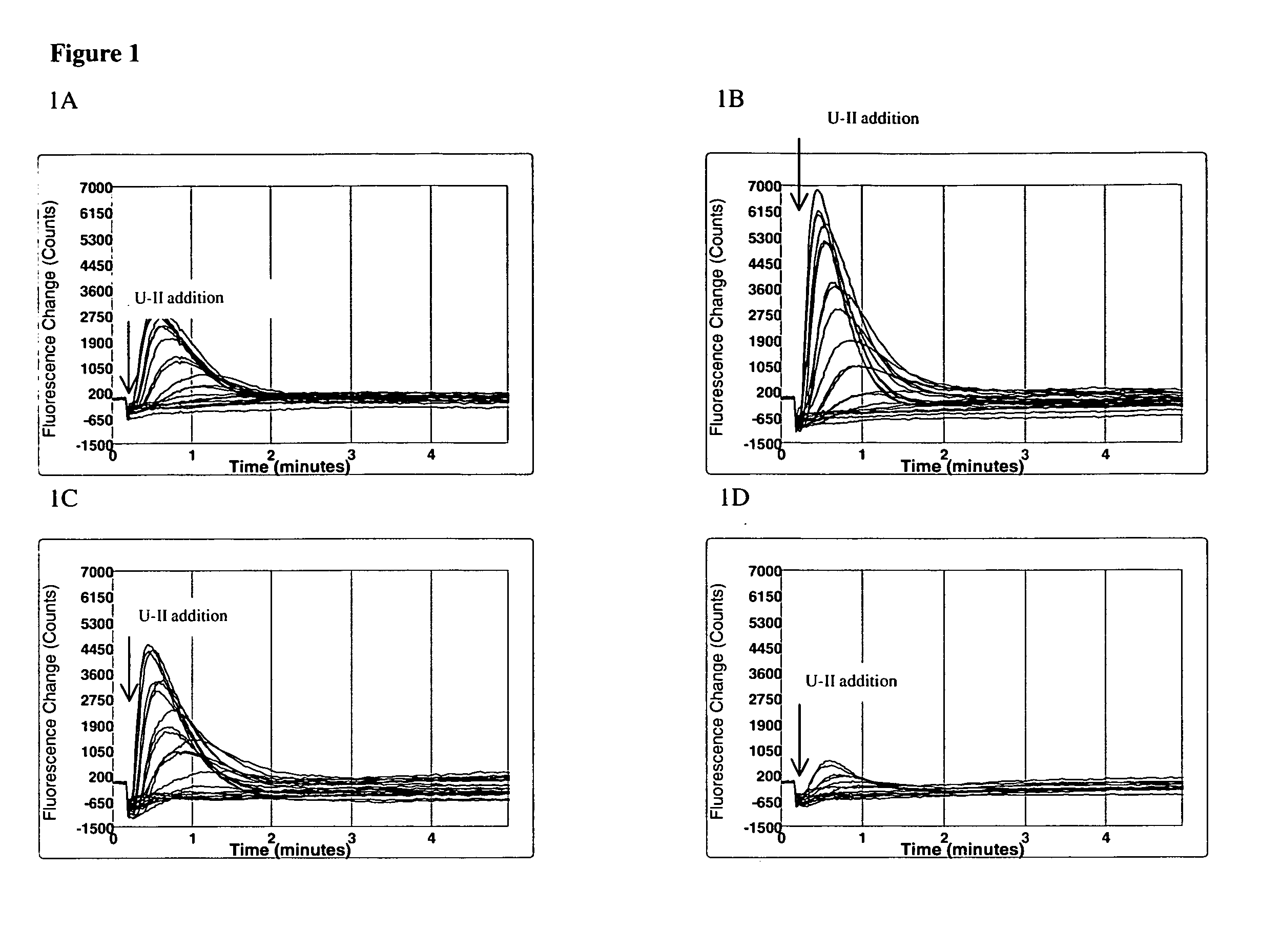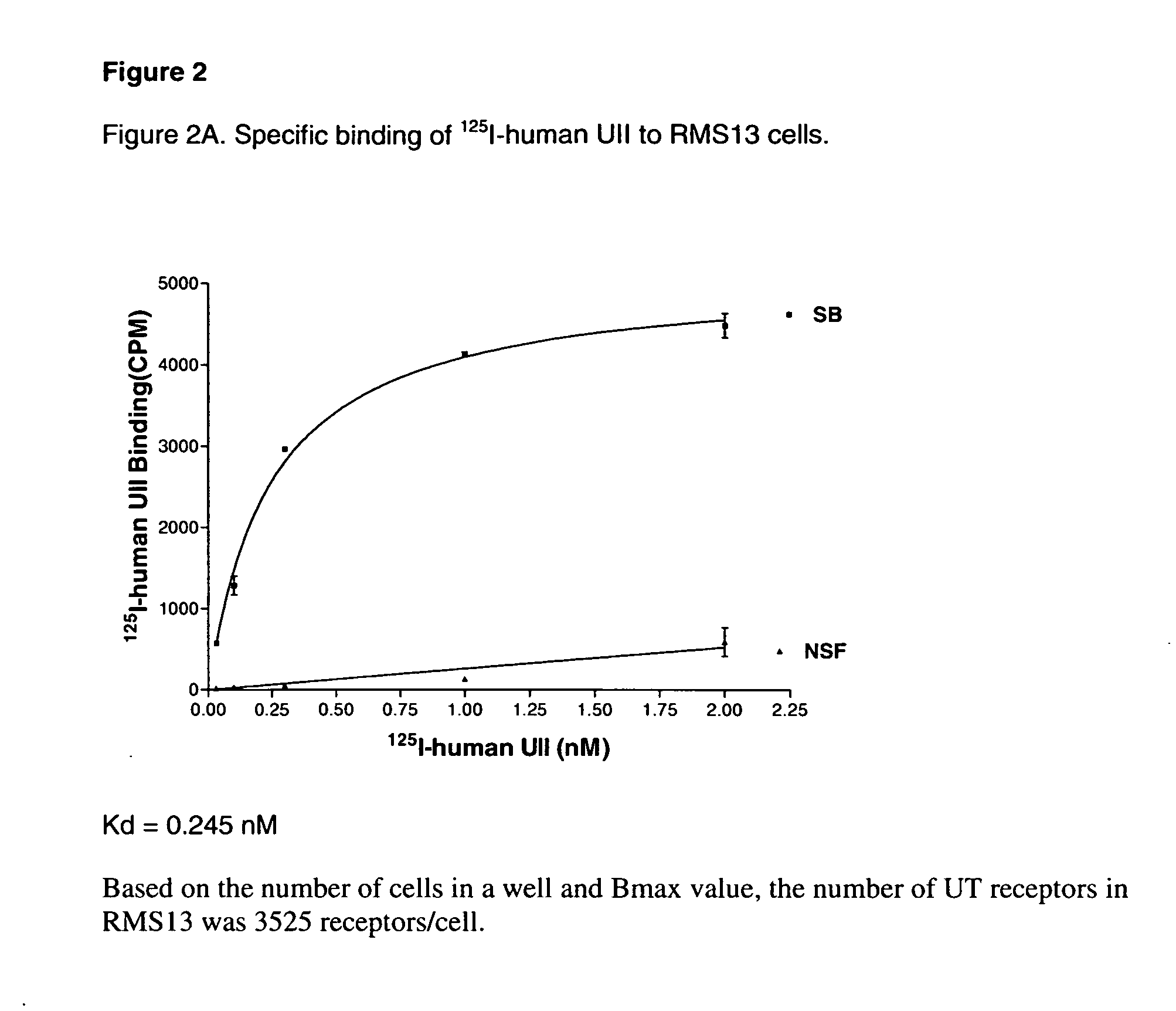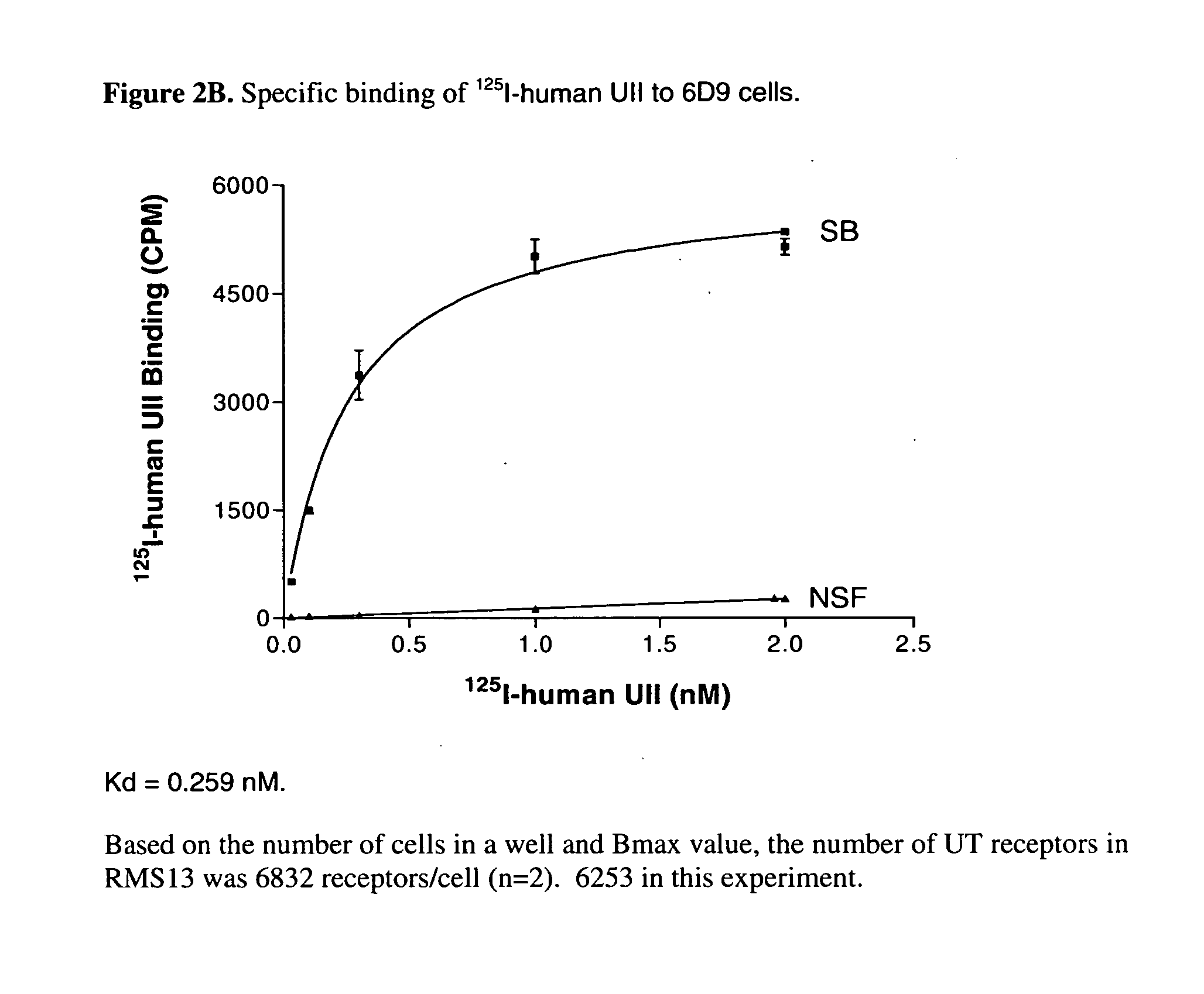Human cell clones useful for functional analyses of the biological activity of an endogeneous urotensin II receptor and uses thereof
- Summary
- Abstract
- Description
- Claims
- Application Information
AI Technical Summary
Benefits of technology
Problems solved by technology
Method used
Image
Examples
example 1
Sub-clones of SJRH30 Having Increased Calcium Mobilization Upon U-II Activation
[0059] Dilution subcloning (Staszewski, 1984, Yale journal of biology and medicine, 57(6): 865-8; Coller et al., 1986, Methods in enzymology 121: 412-7) and calcium mobilization assay were used to obtain a cell clone that mobilizes calcium more efficiently in response to U-II.
[0060] The parental SJRH30 cell line (ATCC NO: CRL-2061™) and RPMI 1640 culture media (ATCC 30-2001) were obtained from ATCC (Manassas, Va.). FBS (Cat. No. SH30070.03) was from Hyclone (Logan, UT). The Calcium 3 dye (Cat. No. R7182) was from Molecular Devices (Sonnyvale, Calif.). Probenecid (Cat. No. P-8761) and human urotensin II (Cat. No. U-7257) were from Sigma (St Louis, Mo.). Urantide was purchased from Peptide International (Cat. No. PUT-3639-P1, Louisville, Ky.). Branched DNA kits and probes were from Genospectra (Freemont, Calif.).
[0061] Unless otherwise indicated, cells of SJRH30 and its subclones were cultured in RPMI me...
example 2
Sub-clones of SJRH30 Contained More Urotensin II Binding Sites
[0068] Radioligand-binding studies were performed to characterize the cell clones 6D9, 4G5, 10A7, and SJRH30.
[0069] For the [125I]-U-II binding experiments, cells were plated in 24-well Costar plates in complete medium for 24 h to reach 60% to 80% confluence. The binding medium used was Dulbecco's modified Eagle's medium (DMEM) containing 2 mg / ml BSA and 25 mM HEPES (pH 7.4). The cells were washed at room temperature 1× with the binding medium, and were incubated with 0.1 ml per well of binding medium containing the indicated amount of [125I]-U-II in the absence or presence of 1 μM human UII for 3 h. The cells were washed 3× with the binding medium and solubilized in 1% SDS and 0.5 N NaOH. Radioactivity was quantified by gamma counting.
[0070] Analyses of the binding curves indicates that U-II binds to cells of all three clones in a concentration dependent manner, see for example, the binding curve of 6D9 in FIG. 2B. Th...
example 3
The Sub-Cloned Human Cell Clones Have Increased Gene Expression of The UT Receptor
[0072] Branched-DNA analysis was performed to measure the relative amount of MRNA of the UT receptor in the cell clones 6D9, 4G5, 10A7, and SJRH30.
[0073] In this protocol, cells are plated in 96 well plates. Cells are then lysed in the presence of pools of capture and label probes (CE and LE respectively) specific for the urotensin II receptor or for GAPDH . The lysis procedure does not require that the cellular supernatant be removed; hence this protocol works for both suspension and adherent cultures. The probes within the lysis buffer serve certain functions: CE's have complementary sequences to both the message and to a capture plate so serves to adhere the message to the plate. The LE has sequences complementary to the message as well as to the bDNA and serves as a scaffold for binding the amplifying system. Following lysis of the cells, the samples are transferred to a capture plate. The captur...
PUM
 Login to View More
Login to View More Abstract
Description
Claims
Application Information
 Login to View More
Login to View More - R&D
- Intellectual Property
- Life Sciences
- Materials
- Tech Scout
- Unparalleled Data Quality
- Higher Quality Content
- 60% Fewer Hallucinations
Browse by: Latest US Patents, China's latest patents, Technical Efficacy Thesaurus, Application Domain, Technology Topic, Popular Technical Reports.
© 2025 PatSnap. All rights reserved.Legal|Privacy policy|Modern Slavery Act Transparency Statement|Sitemap|About US| Contact US: help@patsnap.com



